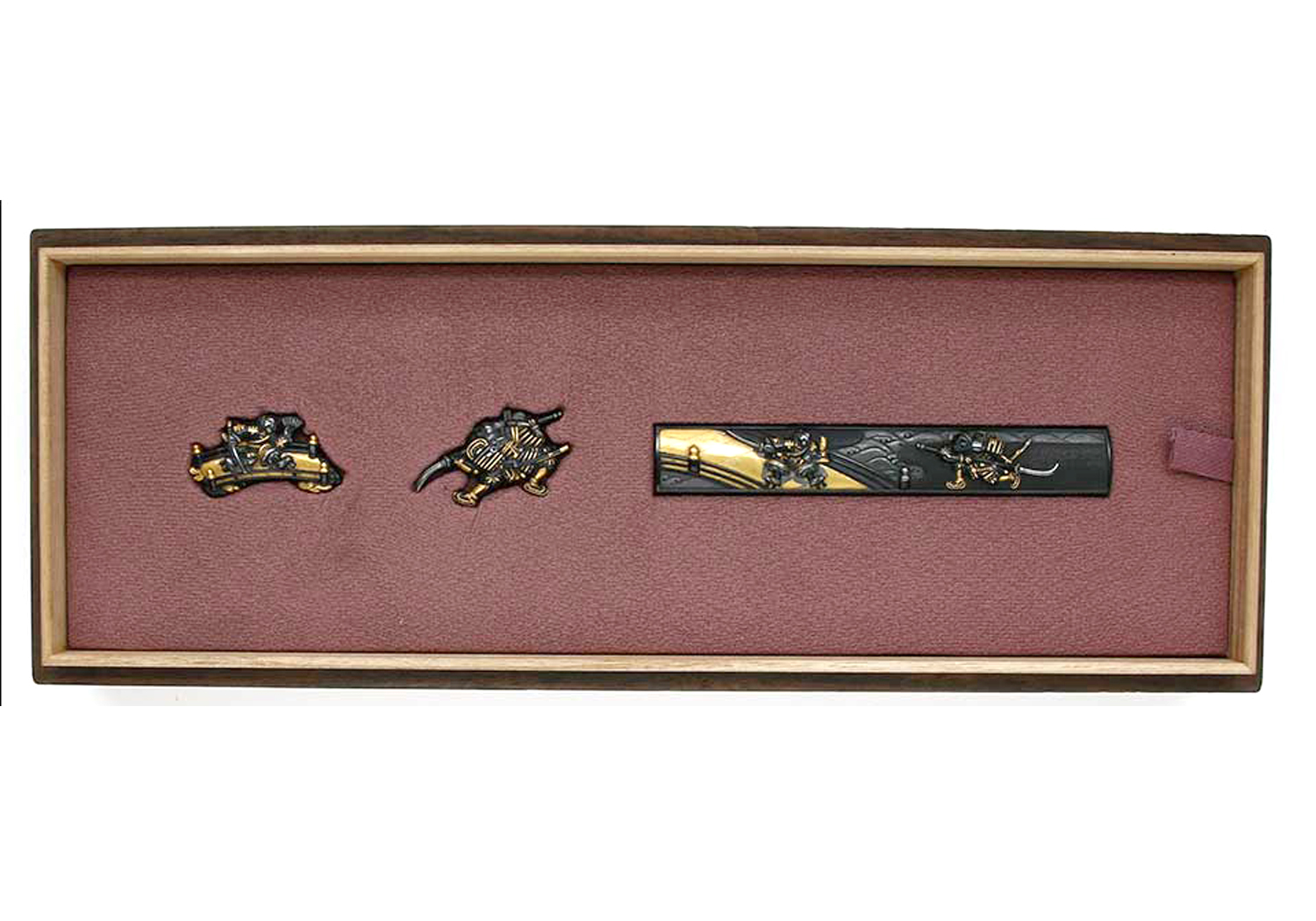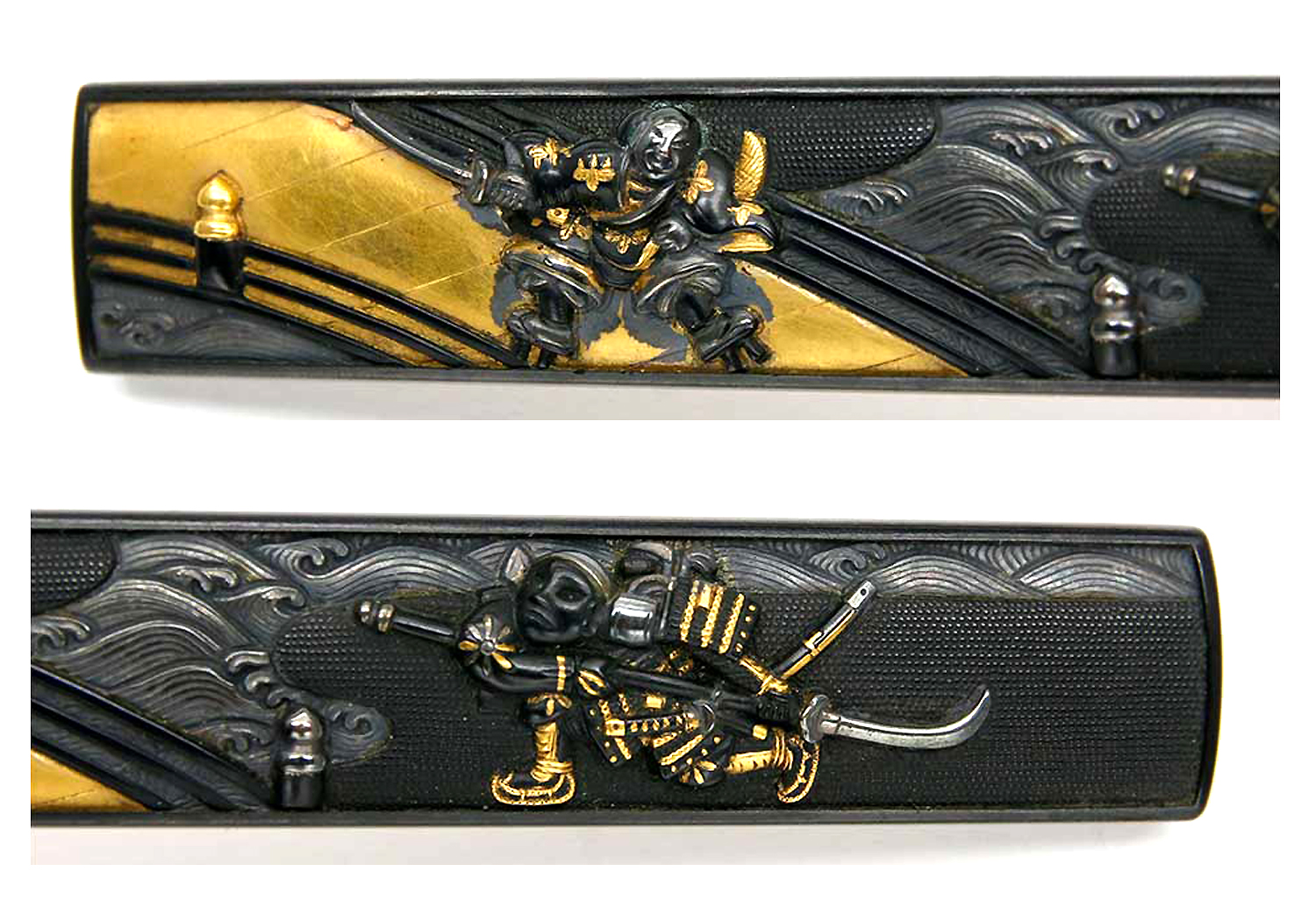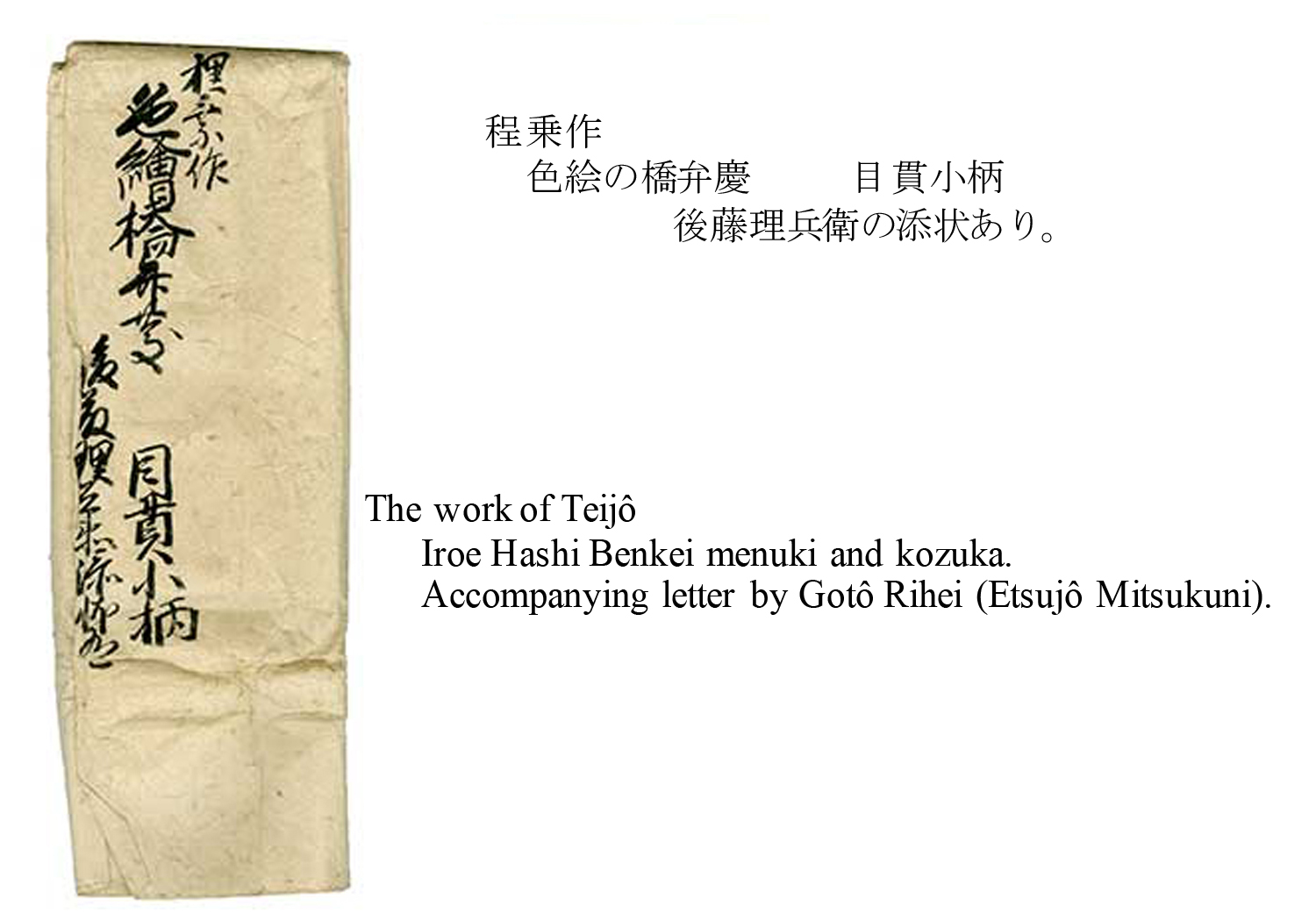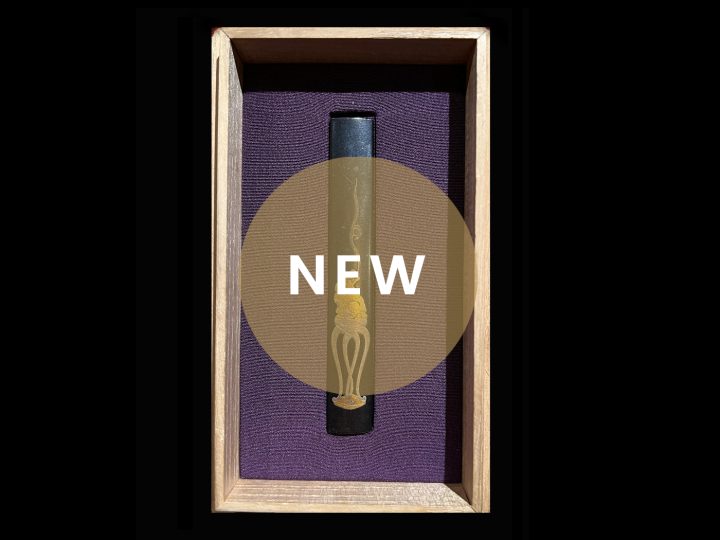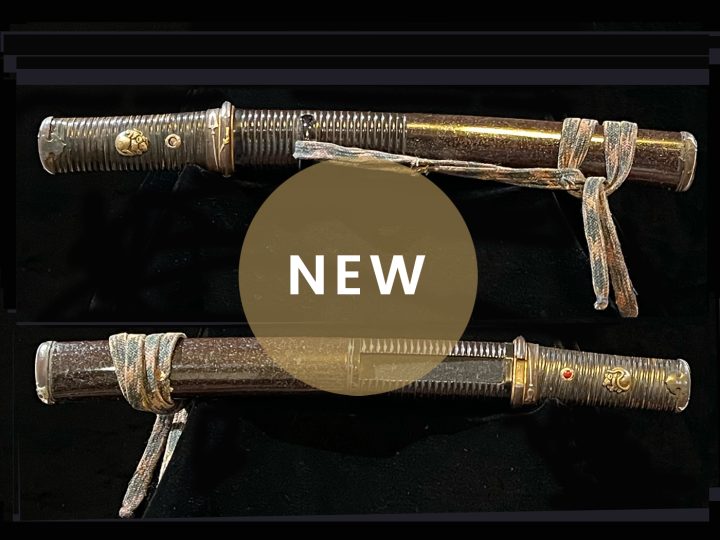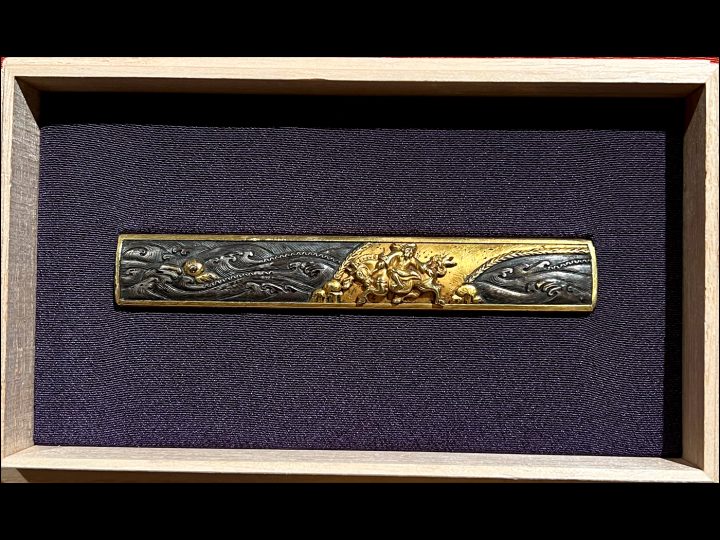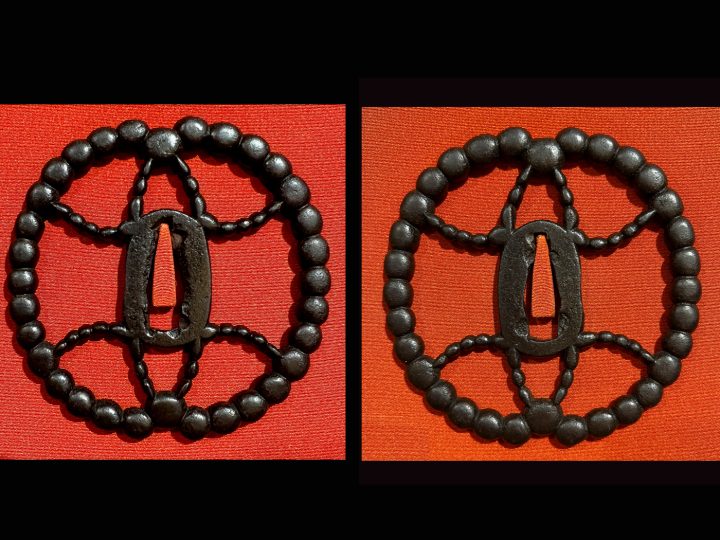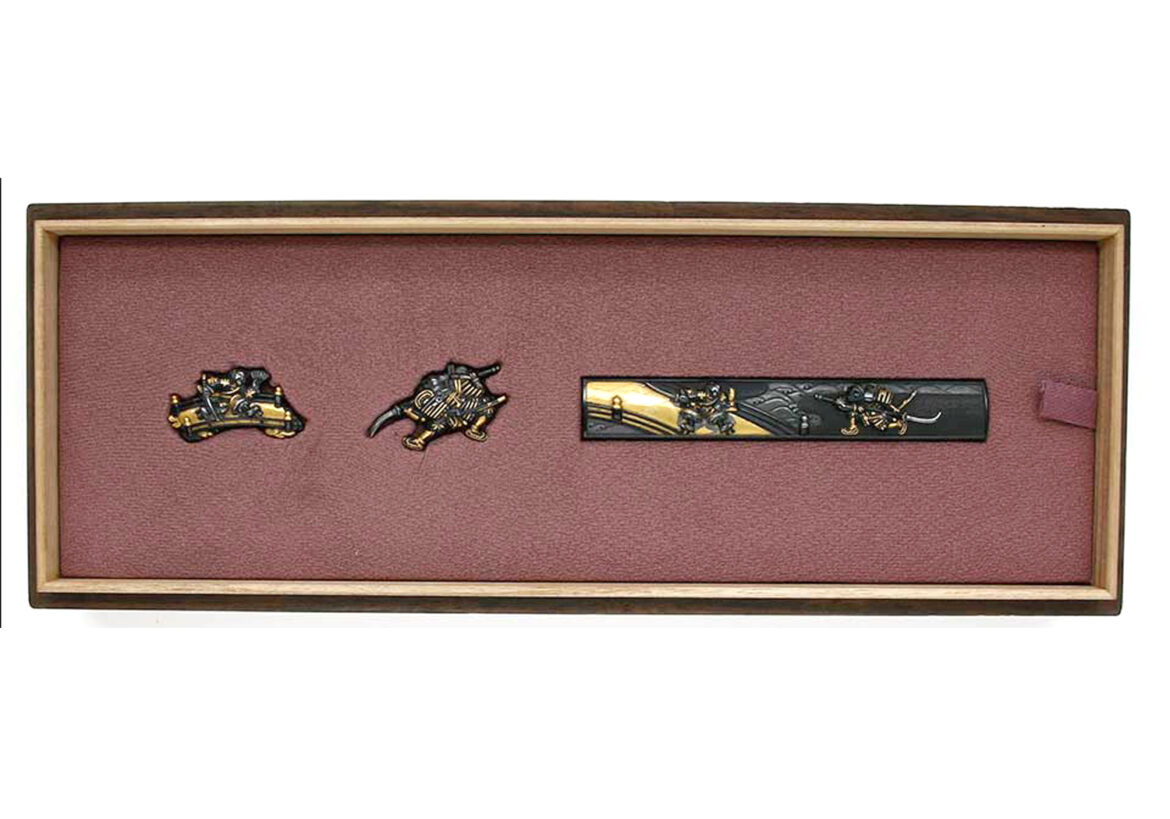
Gotô Teijô (1603-1673), was the second son of Kenjô, the seventh Shirobei mainline master. His real name was Genichirô, which was changed to Mitsumasa after his twenty-second birthday. Mitsumasa ‘s uncle was Sokujô Mitsushige (1600-1631), the eighth Gotô Shirobei master.
Sokujô died in 1631 at the early age of 32. His son, Renjô, who was four years old at the time, was too young to take over as head of the family lineage. Therefore, Teijô became the guardian of the family and inherited the title as head of the Gotô Shirobei line in Kan-ei 13th (1636), becoming the ninth mainline master.
In the third year of Shoho (1646), when he was forty-four, Mitsumasa changed his name to Teijô. For some time, Gotô Teijô was in the service of Tokugawa Ietsuna, the fourth Tokugawa Shogun, receiving an annual stipend of forty koku of rice. He also worked for the Maeda family as second master of the Kaga Gotô school. When Renjô came of age around Shoo 1st (1652), Teijô retired as head of the family and became a full-time retainer of Maeda Toshitsune (1593-1658). Along with his cousin Enjo, Teijo Mitsumasa continued to work for the Maeda clan in Kaga, and the Edo Bakufu, until his death in the first year of Enpo (1673).
The works of Teijô, Kenjô and Kakujô mark the beginning of the Kaga Gotô school. These makers and their followers were all quite highly skilled. The Kinko Meikan ranks Teijô as Meiko which is the next to top rank for a kinko artisan.
Gotô Teijô signed some of his items but mostly left his work unsigned. This was standard practice at the time as the works were going to daimyo, nobility and the Shogunate. When he signed he signed sometimes with his civilian name Gotô Mitsumasa, sometimes he signed just in two characters as Teijô with his kao. Sometimes he signed and filled his name in gold. From the signed items we can see a diverse work style and subject matter that branched out from the standard shishi and dragon types from previous generations. Some of these are whimsical. However when he made dragons, he made powerful and beautifully shaped items.
Many of Teijô’s works have passed Jûyô, and one tsuba passed Tokujû (his kogai is part of a mixed set on a daisho which has also pass Tokuju). There are some other mixed sets of Gôtô work at Jûyô that contain his work as well. Furthermore, there is an outstanding koshirae for a ken which is the work of Gotô Teijô and has the rank of Jûyô Bunkazai, and Important Cultural Property.
The futatokoromono presented here are a fine example of the skill of Gotô Teijô. The kozuka and menuki tell the story of the duel on the Gojo Bridge in Kyôto between Musashibo Benkei and Ushiwakamaru who later became known as Minamoto Yoshitsune.
Benkei was a powerful Buddhist priest who was known for his fighting prowess using the long staffed Naginata. None could defeat him. He was said to have wandered around Kyoto every night on a personal quest to take 1000 swords from samurai warriors, who he believed were arrogant and unworthy to possess them. After collecting 999 swords through duels and looking for his final prize, he met a young man playing a flute at Gojotenjin Shrine in Kyôto. The much shorter man supposedly carried a gilded sword around his waist. Instead of dueling at the shrine itself, the two walked to Gojo Bridge in the city where the bigger Benkei ultimately lost to the smaller warrior, who happened to be Minamoto no Yoshitsune, a son of Minamoto no Yoshitomo. Not long after the duel, Benkei, frustrated and looking for revenge, waited for Yoshitsune at the Buddhist temple of Kiyomizu, where they fought and he lost yet again.
After the second defeat, he became Yoshitsune’s retainer and fought with him in the Genpei War against the Taira clan from 1185 until his death in 1189.
This set of fittings passed jûyô kodôgu in the 61st Jûyô shinsa held in 2015. The translation of the Jûyô certification is as follows:
Jūyō-kodōgu at the 61st jūyō shinsa held on October 20, 2015
Hashi Benkei no zu futatokoromono (橋弁慶図⼆所物) – Futatokoro depicting
Minamoto no Yoshitsune (源義経) fighting Benkei (弁慶) on Gojô bridge
Kozuka, menuki mumei: Teijō (程乗)
With soejō by Gotō Mitsukuni (後光)
Measurements:
Kozuka length 9.65 cm, width 1.45 cm
Description:
Hinshitsu-keijō: kozuka of shakudō with nanako ground and takabori relief that is highlighted with gold and silver iroe, reverse gilded; menuki of shakudō, in katachibori, and highlighted with gold and silver iroe.
Era:
Early Edo period
Explanation;
The 9th Gotō generation Teijō (程乗) was the second son of the 7th generation Kenjō (顕乗) and was born in Keichō eight (慶⻑, 1603). He bore the same youth name as his father, Gen’ichirō (源⼀郎), and his legal first name was Mitsutada (光伊). When his father entered priesthood in Kan’ei one (寛永, 1624) under the name Kenjō, Teijō, then Mitsutada, succeeded as 2nd generation of the Ribei (理兵衛) lineage under the name Ribei Mitsumasa (理兵衛光昌). He was 22 years old at that time. When the 8th Gotō main line generation Mitsushige (光重), also named Sokujō (即乗) died at the young age of 32, his successor Kameichi (⻲市), later Renjō (廉乗), was only four years old. Thus, Kenjō succeeded as 8th generation of the main line and passed on this function to his son Teijō, who later followed as 9th generation. When Kameichi/Renjō turned 18, he became the 10th head of the main line, although Teijō acted as his guardian until Kameichi/Renjō was 25 years old. Together with Kakujō’s (覚乗) son Enjō (演乗), Teijō worked on a biannual basis for the wealthy Kaga domain and contributed so greatly to the flamboyant local culture.
This work depicts the gorgeously carved scene of Ushiwakamaru (⽜若丸), i.e., the young Minamoto no Yoshitsune, fighting the warrior monk Benkei on the large Gojō (五条) Bridge in Kyōto, and the actions of each of the figures is interpreted in a truly lively manner. This futatokoromono set comes with an accompanying documentation (soejō) written by Teijō’sson and heir Etsujō Mitsukuni (悦乗光邦), in which he certifies that this is an authentic work of his father. Such a soejō is regarded as reliable as if the work was signed by the artist. Incidentally, appraising soejō by Etsujō Mitsukuni are extremely rare and valuable.
This futatokoromono set comes with an accompanying documentation (soejō) written by Teijō’s son and heir Etsujō Mitsukuni (悦乗光邦), in which he certifies that this is an authentic work of his father. Such a soejō is regarded as reliable as if the work was signed by the artist. Incidentally, appraising soejō by Etsujō Mitsukuni are extremely rare and valuable.
PRICE: $29,500.00

